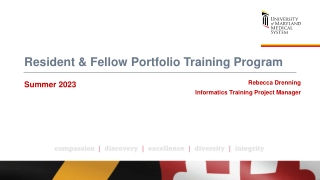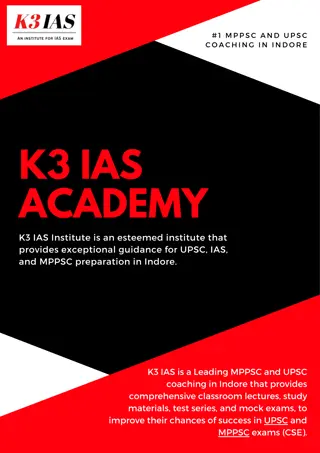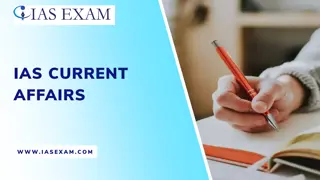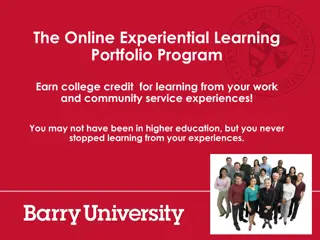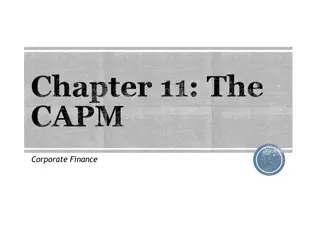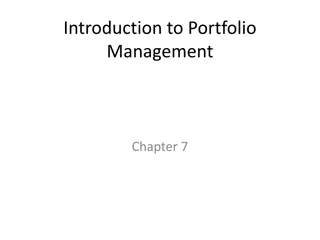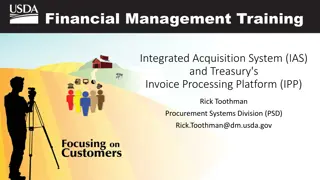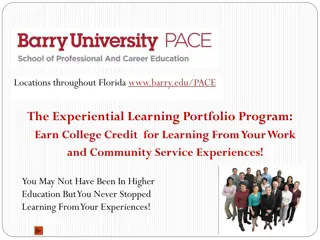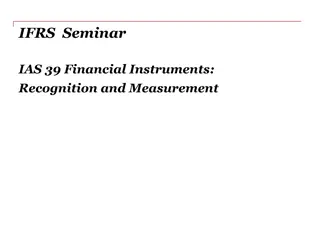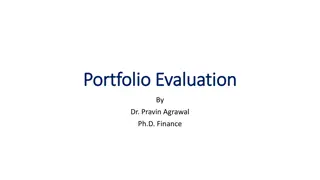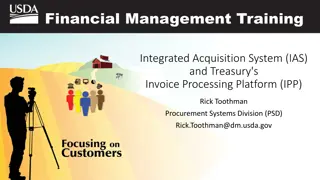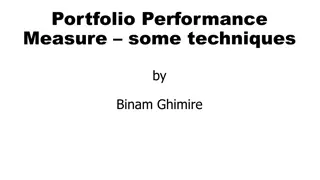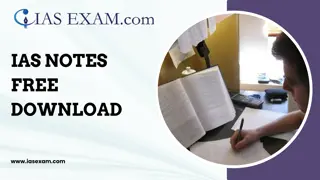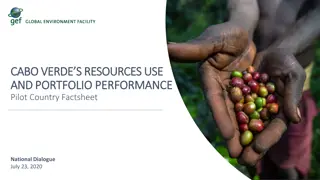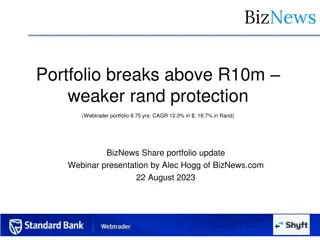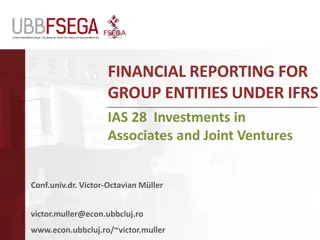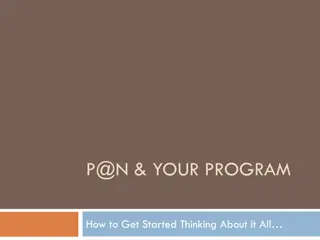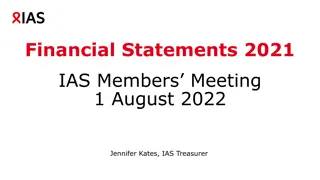Introduction to Portfolio-Based Learning in IAS
Explore the concept of portfolio-based learning at IAS through courses like BIS 300 and BIS 499. Learn how to create and showcase your artifacts in a meaningful portfolio for academic and professional purposes. Understand the significance of archiving your work and organizing your portfolio to demonstrate your achievements effectively.
Download Presentation

Please find below an Image/Link to download the presentation.
The content on the website is provided AS IS for your information and personal use only. It may not be sold, licensed, or shared on other websites without obtaining consent from the author.If you encounter any issues during the download, it is possible that the publisher has removed the file from their server.
You are allowed to download the files provided on this website for personal or commercial use, subject to the condition that they are used lawfully. All files are the property of their respective owners.
The content on the website is provided AS IS for your information and personal use only. It may not be sold, licensed, or shared on other websites without obtaining consent from the author.
E N D
Presentation Transcript
Your IAS Portfolio(s) This presentation is available on the IAS web page. Look under "IAS Degree Portfolio."
Portfolio Portfolio- -based learning in IAS is based learning in IAS is central to... (1 of 3) central to... (1 of 3) 1. BIS 300, where you start to build an archive of your work and make a course portfolio using your personal Google drive, where you can store your archive.
Portfolio Portfolio- -based learning in IAS is based learning in IAS is central to... (2 of 3) central to... (2 of 3) 2. other courses in IAS and at the UW, where you build your archive. (Note: Your archive can and should include artifacts from co- and extra-curricular activities.) IPR IPR BIS 499 499 BIS BIS 300 300 BIS Degree core courses courses Degree core Elect- ives ives Elect- BIS 399 399 BIS
Portfolio Portfolio- -based learning in IAS is based learning in IAS is central to... (3 of 3) central to... (3 of 3) 3. BIS 499, the Portfolio Capstone course where you draw from your archive to create a learning/professional portfolio. IPR IPR BIS 499 499 BIS BIS 300 300 BIS Degree core courses courses Degree core Elect- ives ives Elect- BIS 399 399 BIS
So Im in BIS 300, how do I get So I m in BIS 300, how do I get started? started? Some Basic Terms An "artifact" is anything you can store. An "archive" is a collection of all your artifacts.
A "portfolio" contains a limited A "portfolio" contains a limited number of artifacts drawn from your number of artifacts drawn from your archive. archive.
A portfolio is... A meaningful selection of your artifacts. Thoughtfully organized to provide evidence of your achievements and abilities. Introduced by an essay that frames the significance of those artifacts.
Portfolios have audiences... Your professor or academic program Potential employers Potential graduate or professional school admissions committees Your friends, family, and you
Artifacts to include in your archive... Artifacts to include in your archive... Course papers and projects, exams, presentation materials Course syllabi and assignments Videotapes of performances or presentations Photographs of posters or art pieces Written comments by instructors or peers on presentations, performances, or group work
Your archive could also include... Your archive could also include... Recommendation letters Awards and award letters Web pages you contributed to Material from your work life Material from work with community or volunteer organizations
How to build your archive... Save everything. Even less-than-satisfactory assignments can be evidence of your progress. Get commented versions of papers back whenever possible. Look for ways to record performances, presentations, and collaborative work - activities that don't produce easily-saved documents. When you can, save in an electronic format. things that you have only paper copies of. Take photos. Use your personal Google drive to keep your stuff in one place it's easy to lose documents that are on thumb drives or different computers. Scan
How to make a portfolio How to make a portfolio - - first steps... first steps... 1. Review the artifacts in your archive. What do they show? 2. Think about who your audience is. 3. Decide what evidence-based claims about your own abilities you want to make. Remember: You're not just giving people a lot of stuff. You're giving them a story. Sometimes less is more. Almost always, in fact.
How to make a portfolio: further How to make a portfolio: further steps... steps... 4. Select artifacts that you can use to provide evidence for your story about your abilities. 5. Organize those artifacts in persuasive ways. 6. Write an introductory essay in which you state your claims, refer to the artifacts as evidence, and explain why and how those artifacts support your claims. Making a good portfolio takes practice...
Resources Sample IAS Student Capstone Portfolios The UW Bothell Writing and Communication Center The UW Bothell Career Services Your IAS Faculty Google Drive Me: Burgett@uw.edu


